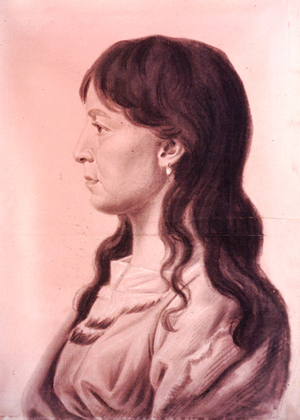Sheheke and his wife Yellow Corn had a significant role in the Lewis and Clark expedition, and an even more significant affect on the fur trade immediately following.
Sheheke’s Wife, Yellow Corn (1807)[1]The artist himself erroneously labeled the portrait, at the left edge, jeune indienne des iowas du missoury—“Indian girl of the Iowas of the Missouri.” Ellen G. Miles, Saint-Memin and … Continue reading
by Charles B. J. F. de Saint Mémin (1770–1852)
Elizabeth DeMilt Fund, Collection of the New York Historical Society Museum
Pencil and charcoal on paper, 21-1/4 by 15-1/4 inches.
Sheheke (“Coyote”), the principal chief of the lower Mandan village, Matutonka (or Matootonha), was nicknamed “Big White” by an unknown white man, evidently because of his size and relatively fair complexion. He would be the nucleus of a delegation to Washington City. According to an observer at a New Year’s Day celebration at Washington City in 1807, Yellow Corn had “pretty features, a pale yellowish hue, bunches of ear-rings, and her hair divided in the middle, a red line running right across from the back part of the forehead.”[2]Frederick Webb Hodge, Handbook of American Indians North of Mexico, Smithsonian Institution, Bureau of American Ethnology, Bulletin No. 30. 2 vols, (Washington, D.C.: Government Printing Office, … Continue reading The couple would not be able to return to their people for many years.
Related Pages
Sheheke’s Delegation
by Joseph A. Mussulman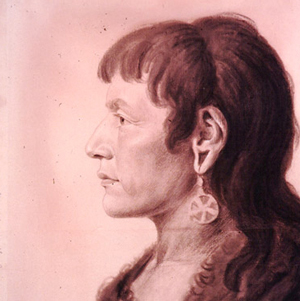

Sheheke’s diplomatic trip to Washington City and his difficult return home brought down the careers of at least two great leaders—himself, and Meriwether Lewis.
October 26, 1804
Mitutanka
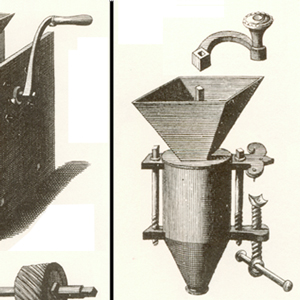

The expedition arrives at Mitutanka—a Mandan village at the Knife River Village complex. Lewis visits the village while Clark entertains visiting Mandans who are “much pleased with the Corn mill”.
October 30, 1804
Sheheke's introduction


Sheheke and one other come to the expedition’s camp at the Knife River Villages having missed yesterday’s council. Clark and eight men head up the river in search of a place to spend the winter.
October 31, 1804
Black Cat speaks


Clark visits Posecopsahe (Black Cat), the main chief at Ruptáre, one of the five Knife River Villages. Posecopsahe wishes for peace and returns two beaver traps recently stolen from two French traders.
November 12, 1804
Mandan history lesson


Sheheke and his wife—likely Yellow Corn—visit the Fort Mandan construction site. She brings 100 pounds of meat, and he tells the Mandan creation story. He also describes the Hidatsa and Crow Nations.
December 7, 1804
Hunting buffalo
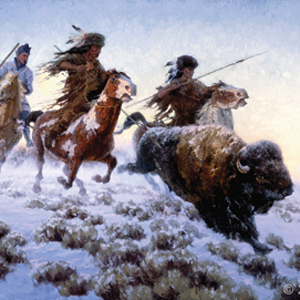

A group of hunters joins with the Mandans, and Sgt. Gass is impressed with their buffalo hunting skills and well-trained horses. By day’s end, several suffer frostbite, and Clark issues half a gill of rum.
December 14, 1804
The buffalo disappear
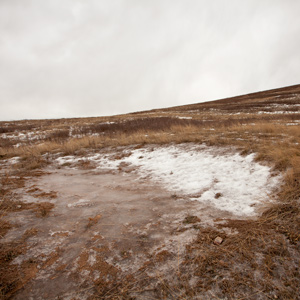

Clark takes a hunting party eighteen miles outside Fort Mandan but the buffalo seem to have disappeared. At the fort, Lewis entertains Chief Sheheke (Big White) and Sgt. Ordway hosts fourteen Mandans.
January 1, 1805
A new year at Fort Mandan


At Fort Mandan, New Year’s Day starts with rain and cannon fire. Several enlisted men are allowed to visit a nearby Mandan village, and Clark orders York to dance for them. The day ends snowy and cold.
January 7, 1805
Maps from Indian information
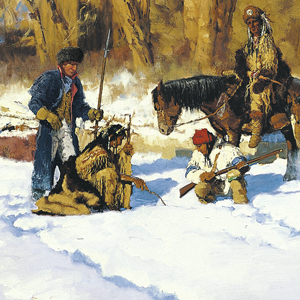

Sheheke (Big White) brings a sketch of the Yellowstone River country into Fort Mandan. He also provides oral information which Clark uses to draw a map. Three hunters return having suffered from the cold.
February 6, 1805
A happy resource
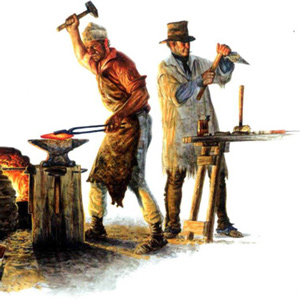

Several Mandan men from Mitutanka briefly visit Fort Mandan, and Lewis describes the blacksmiths as a ‘happy resource’. Elsewhere, Clark’s large group hunts near present Square Butte Creek, North Dakota.
February 21, 1805
Mandan Medicine Stone
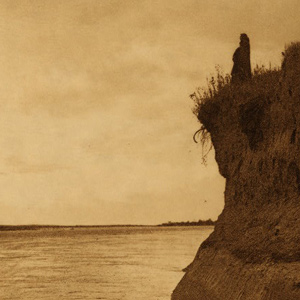
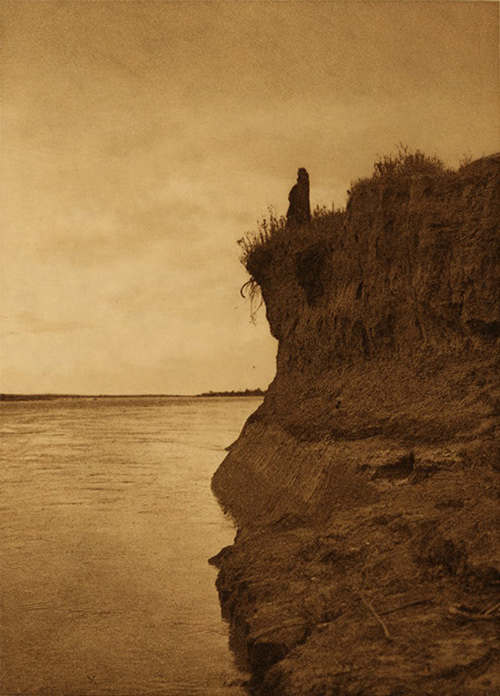
At Fort Mandan, Big White and Big Man tell Clark that several Mandan men left the Knife River Villages to consult their Medicine Stone. Lewis’s hunting party returns with about 3,000 pounds of meat.
March 19, 1805
Hidatsa war parties


At Fort Mandan, two Mandan chiefs tell the captains that the Hidatsas are forming war parties. Sgt. Gass seeks helpers to move the new dugout canoes from his canoe camp to the river.


Via the shorter route, Pryor would have arrived at the Knife River villages by about 6 August 1806. A trip to see Hugh Heney at Fort Assiniboine would take another two weeks.
August 16, 1806
Parting gifts
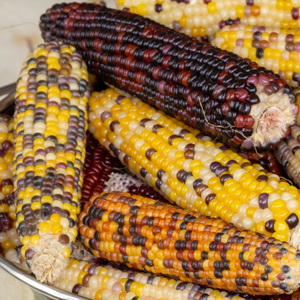

At the Knife River Villages, a village gifts more corn than the boats can carry. A swivel gun is given to a Hidatsa chief and the blacksmith tools to Charbonneau. Sheheke agrees to go to Washington City.
August 17, 1806
An offer to raise Jean Baptiste
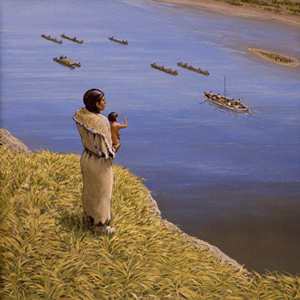

The expedition leaves the Knife River Villages without Pvt. Colter and the Charbonneau family. Clark encourages the Charbonneaus to come to St. Louis where he can arrange the education of Jean Baptiste.
August 18, 1806
A Mandan history lesson
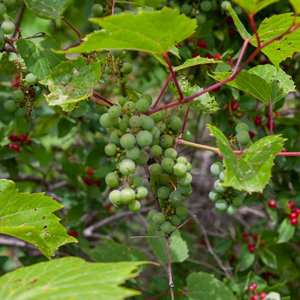

Despite windy conditions, the expedition makes forty miles down the Missouri River. Chief Sheheke (Big White) tells Clark his people’s history. Near the Heart River, he tells the Mandan Creation Story.
August 21, 1806
At the Arikara villages
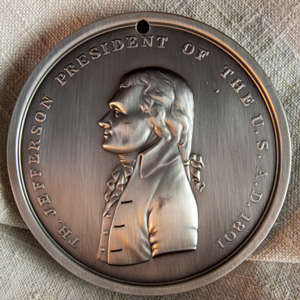

At the Arikara villages above present Mobridge, South Dakota, several councils are conducted between various Mandans, Arikaras, and Cheyennes. One of their 1804 engagés shares ominous news.
August 28, 1806
A day at Pleasant Camp


The expedition arrives at an old camp—known as Pleasant or Plum Camp—below present Oacoma, South Dakota. They collect zoological specimens, make leather for new clothes, and pick plums.
Notes
| ↑1 | The artist himself erroneously labeled the portrait, at the left edge, jeune indienne des iowas du missoury—“Indian girl of the Iowas of the Missouri.” Ellen G. Miles, Saint-Memin and the Neoclassical Profile Portrait in America (Washington, D.C.: Smithsonian Institution Press, 1994), 434–35. |
|---|---|
| ↑2 | Frederick Webb Hodge, Handbook of American Indians North of Mexico, Smithsonian Institution, Bureau of American Ethnology, Bulletin No. 30. 2 vols, (Washington, D.C.: Government Printing Office, 1912) 146. |
Experience the Lewis and Clark Trail
The Lewis and Clark Trail Experience—our sister site at lewisandclark.travel—connects the world to people and places on the Lewis and Clark Trail.
Discover More
- The Lewis and Clark Expedition: Day by Day by Gary E. Moulton (University of Nebraska Press, 2018). The story in prose, 14 May 1804–23 September 1806.
- The Lewis and Clark Journals: An American Epic of Discovery (abridged) by Gary E. Moulton (University of Nebraska Press, 2003). Selected journal excerpts, 14 May 1804–23 September 1806.
- The Lewis and Clark Journals. by Gary E. Moulton (University of Nebraska Press, 1983–2001). The complete story in 13 volumes.
